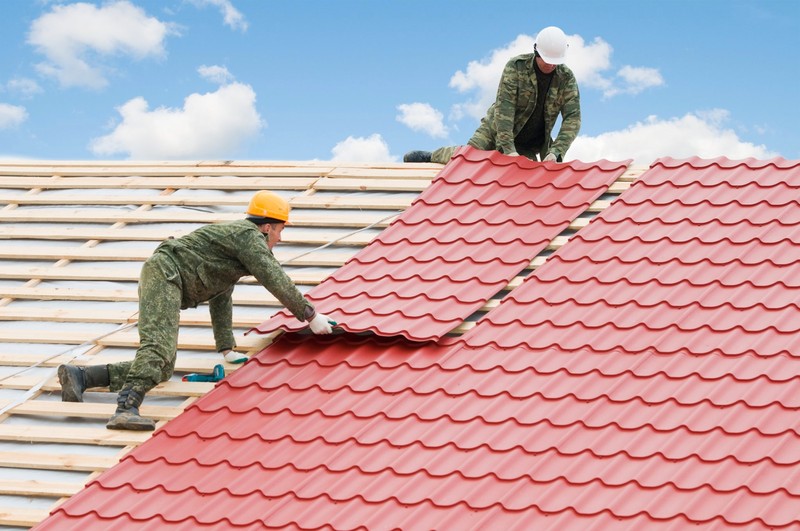What Homeowners Need to Know About Residential Roofing

Your home’s roof doesn’t only protect you and your family from the elements. It also plays a significant role in the overall aesthetic appeal of your property. Learn more about residential roofing below.
Components of Residential Roofs
As a homeowner, you must familiarize yourself with the key components of residential roofs. Here are some of them:
- Shingles
Shingles are one of the most crucial components of a roof, as they protect the sheathing from weather conditions. They’re made of various materials, such as asphalt, wood, metal, or slate, each offering different benefits in terms of durability, aesthetics, and cost.
- Trim
Trim is installed to protect the seam along the ridge or hip of a roof. It provides an additional layer of protection and enhances your roof’s overall appearance.
- Rafters
Rafters are metallic or wooden slats that support the shingles and sheathing. They play an important role in distributing the weight of the roof evenly and ensuring its structural stability.
- Underlayment
The underlayment is a water-resistant material that is laid over the plywood sheathing. It acts as an additional layer of protection, guarding against damage caused by snow or rain that may penetrate the shingles.
- Drainage
A well-designed drainage system allows your roof to shed water effectively. It prevents water from pooling on the roof, which can lead to leaks and structural damage over time.
Types of Roofing Materials
A variety of materials is commonly used in the roofing of houses or domestic buildings. Listed below are some of the most favored options by homeowners:
- Asphalt Shingles
The most widely used roofing material in residential construction are asphalt shingles. They are affordable, durable, and resistant to various weather conditions. They are also available in different styles and colors, making them a versatile choice for homeowners.
- Metal Roofing
Metal roofing has become increasingly popular due to its longevity and durability. It can withstand severe weather conditions, including high winds and heavy rain. Metal roofs are also energy-efficient and eco-friendly, as they can be made from recycled materials.
- Clay and Concrete Tiles
Clay and concrete tiles are known for their aesthetic appeal and durability. They add a distinctive look to homes and can last for several decades with proper maintenance. However, they are heavier and may require additional structural support than other roofing materials.
- Wood Shingles and Shakes
Wood shingles and shakes provide a natural, rustic look to residential roofs. They are typically made from cedar or redwood, offering excellent insulation and resistance to insects and decay. However, wood roofing requires regular maintenance to ensure longevity and prevent issues like rot and moss growth.
Roofing Maintenance
Regular maintenance is essential for extending the lifespan of your residential roof. Here are some key maintenance tasks:
– Remove debris, leaves, and branches from your roof regularly to prevent clogging and water damage.
– Schedule annual roof inspections to identify any signs of damage or deterioration. Look for cracked or missing shingles, leaks, and damage to flashing.
– Clean and maintain downspouts and gutters regularly to ensure proper water drainage. Clogged gutters can lead to water backups and potential roof damage.
– Trim overhanging tree branches to minimize the risk of falling debris and potential damage to the roof during storms.
– Consider hiring a professional roofing contractor for regular maintenance and repairs. They are knowledgeable and have the proper tools to address any issues effectively.
Common Residential Roof Issues
Residential roofs can face various issues over time. Here are some problems you may encounter:
– Leaks are a common issue and can occur due to damaged or deteriorated roofing materials or improper installation. Promptly address leaks to prevent further damage to the roof and the interior of your home.
– Strong winds, hailstorms, and extreme temperature variations can cause shingles to crack, curl, or become loose. Regularly inspect your roof for any signs of shingle damage and replace them as needed.
– In areas with high humidity or shaded by trees, moss and algae can grow on the roof. Regular cleaning and treatment with moss deterrents can help prevent damage and preserve the roof’s integrity.
Contact Your Trusted Roofing Company Today!
For questions or more information about residential roofs, don’t hesitate to contact your trusted roofing contractors. They’ll surely be happy to answer your queries and assist you with your needs.
















